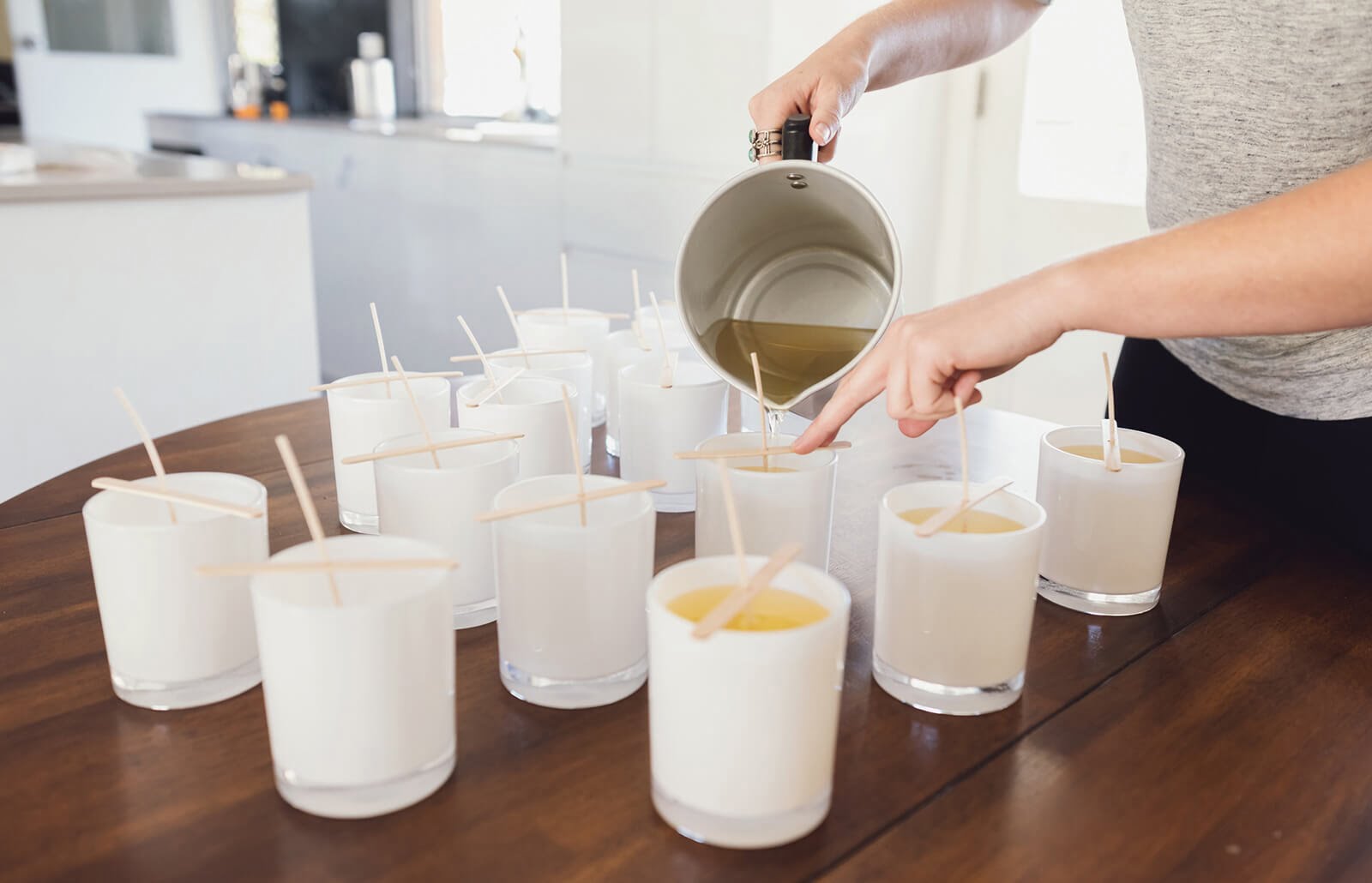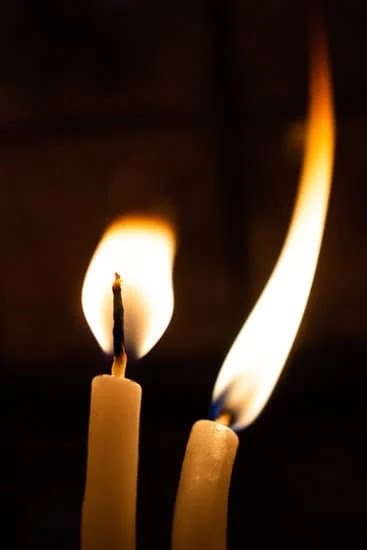The candle making industry is a thriving sector that continues to grow and evolve, with a wide array of factors influencing its overall market trends and economic impact. From historical roots to consumer preferences, this article delves into the various aspects of the candle making industry.
By exploring global market trends, key players and their market share, as well as environmental impact and consumer preferences, we can gain valuable insights into the industry’s current state and future outlook. In this section, we will provide an overview of the candle making industry, offering a glimpse into its historical significance and present-day relevance.
The candle making industry statistics reflect a dynamic landscape shaped by changing consumer preferences, technological advancements, and environmental considerations. By examining the historical evolution of candle making practices and understanding global market trends, we can gain a comprehensive understanding of this industry’s trajectory. Furthermore, an exploration of the economic impact of the candle making industry sheds light on its significance in various economies around the world.
As we delve deeper into this article, we will examine key players in the candle making industry and their respective market shares. Additionally, consumer trends and preferences in candles will be analyzed to provide insight into evolving demands and expectations. The environmental impact of candle making will also be addressed to highlight sustainability challenges faced by the industry. Ultimately, this article seeks to offer a holistic view of the candle making industry while providing a forecast for its future outlook.
Historical Overview of Candle Making
Candle making has a long and storied history, dating back thousands of years. Here is a brief historical overview of candle making:
- Ancient Times: The earliest known candles were developed by the ancient Egyptians, who used rushlights or torches made by soaking the core of reeds in molten tallow. The Romans are also credited with developing the wicked candle made from tallow or beeswax.
- Middle Ages: During this time period, tallow candles were the most common type of candle used for illumination. These candles were made from animal fat and were smoky and had a foul odor.
- 19th Century: The introduction of stearin and paraffin wax revolutionized candle making. These materials burned cleanly and more evenly, leading to a significant improvement in the quality of candles.
The candle making industry has evolved significantly over time, with advancements in technology and changes in consumer preferences driving innovation.
Today, consumers have a wide variety of options when it comes to choosing candles, from traditional wax candles to modern soy-based and beeswax candles. This diversity is reflective of the historical developments that have shaped the industry into what it is today. With a rich history spanning centuries, the candle making industry continues to thrive in today’s market, as evidenced by current candle making industry statistics.
Global Market Trends in the Candle Making Industry
The global market trends in the candle making industry are constantly evolving, driven by changing consumer preferences and technological advancements. Here are some key trends shaping the candle making industry:
- Shift Towards Sustainable Materials: With increasing awareness about environmental issues, there is a growing demand for eco-friendly candles made from sustainable materials such as soy wax, beeswax, and coconut wax. Consumers are more conscious of the environmental impact of their purchases, and this trend is expected to continue in the coming years.
- Rise of Online Sales: The candle making industry has witnessed a significant shift towards online sales, driven by the convenience and extensive product range offered by e-commerce platforms. With the global reach of online retail, candle makers have been able to tap into new markets and reach a wider customer base.
- Emphasis on Customization: Personalization and customization have become increasingly popular in the candle making industry. Customers are seeking unique and bespoke candles that reflect their individual style and preferences. Candle makers are responding to this trend by offering customizable options such as scent combinations, packaging choices, and personalized labels.
These global market trends in the candle making industry highlight the need for companies to stay agile and adapt to changing consumer demands. By embracing sustainability, leveraging online sales channels, and offering personalized products, candle makers can capitalize on these trends to drive growth and innovation.
As the candle making industry continues to evolve, it will be important for businesses to monitor these trends closely and adjust their strategies accordingly in order to remain competitive in the global market. By staying attuned to consumer preferences and adopting sustainable practices, companies can position themselves for success in an ever-changing industry landscape.
Economic Impact of the Candle Making Industry
The candle making industry has not only been a source of relaxation for consumers, but it has also served as a significant contributor to the global economy. According to candle making industry statistics, the economic impact of this industry is quite substantial. In 2020, the global candle market was valued at approximately $3.5 billion and is projected to reach over $6 billion by 2027.
The economic impact of the candle making industry extends beyond just the revenue generated from sales. The production of candles creates jobs and opportunities for various sectors, including manufacturing, retail, and packaging. For example, in the United States alone, the National Candle Association estimates that more than 25,000 people are employed in the candle industry.
Furthermore, in addition to direct employment opportunities, the supply chain involved in producing and selling candles also supports other industries such as glass and metal manufacturing for containers, fragrance and essential oil suppliers, and even marketing and advertising firms. This multi-faceted economic impact underscores the importance of the candle making industry on both a local and global scale.
| Economic Impact | Statistics |
|---|---|
| Global Candle Market Value (2020) | $3.5 billion |
| Projected Global Candle Market Value (2027) | Over $6 billion |
| Employment in US Candle Industry | Over 25,000 jobs |
Key Players and Market Share in Candle Making
The candle making industry is a highly competitive market with several key players vying for market share. These companies have a significant impact on the industry, influencing trends and consumer preferences. Understanding the key players and their market share is crucial in comprehending the dynamics of the candle making industry.
Key Players in the Candle Making Industry
Some of the prominent players in the candle making industry include Yankee Candle, Bath & Body Works, Village Candle, Nest Fragrances, and Colonial Candle. These companies have established themselves as leaders in the market, offering a wide range of products that cater to different consumer preferences.
Market Share Analysis
Yankee Candle holds a significant portion of the market share, with its extensive product line and widespread distribution channels. Bath & Body Works follows closely behind, known for its scented candles and seasonal offerings. Village Candle has also gained traction in the market with its focus on organic and sustainable candles. The competition among these key players drives innovation and quality in products, ultimately benefiting consumers who have access to diverse options.
The Impact on Consumer Trends
The dominance of these key players influences consumer trends and preferences in candles. Their marketing strategies and product development efforts shape the direction of the industry, impacting everything from packaging design to scent varieties. As such, keeping an eye on the market share dynamics of these companies is essential for businesses looking to enter or expand within the candle making industry.
Overall, understanding the landscape of key players and their market share provides valuable insight into the candle making industry’s competitiveness and future prospects. By keeping abreast of developments among these major companies, stakeholders can better anticipate shifts in consumer demand and make informed business decisions within this dynamic market.
Consumer Trends and Preferences in Candles
The candle making industry has seen a significant shift in consumer trends and preferences in recent years. With the growing awareness of the environmental impact of certain candle ingredients, consumers are now seeking out more natural and sustainable options. According to candle making industry statistics, 67% of consumers prefer candles made from soy wax or beeswax, as they are considered more environmentally friendly compared to paraffin candles.
In addition to sustainability, consumers are also placing an emphasis on the fragrance of candles. Aromatherapy and essential oil-based candles are gaining popularity, with 45% of consumers indicating that scent is the most important factor when purchasing a candle. This trend has led to an increase in demand for custom or personalized scents, allowing consumers to create their own unique fragrance blends.
Furthermore, there is a growing preference for artisanal and handcrafted candles over mass-produced options. According to market research, 55% of consumers are willing to pay a premium for hand-poured candles due to their perceived higher quality and craftsmanship. This has created opportunities for small-scale candle makers and independent artisans to thrive in the market.
| Consumer Trends and Preferences | Statistics |
|---|---|
| Preference for soy or beeswax candles | 67% |
| Importance of scent in candle purchase | 45% |
| Willingness to pay premium for hand-poured candles | 55% |
Environmental Impact of Candle Making
The environmental impact of candle making is an important factor to consider in the industry. With the growing concern for sustainability and eco-friendly products, candle manufacturers are increasingly looking for ways to minimize their environmental footprint.
Carbon Footprint Reduction
One of the key focus areas for the candle making industry is reducing carbon emissions. Many companies are investing in sustainable production methods and using renewable energy sources to power their operations. Additionally, some have adopted methods such as carbon offsetting to mitigate the impact of their manufacturing processes.
Biodegradable Materials
Another trend in the industry is the use of biodegradable materials for candle production. Manufacturers are exploring alternatives to traditional paraffin wax, such as soy wax or beeswax, which are more sustainable and environmentally friendly. In addition, there is a growing interest in using natural fibers for wicks, further reducing the environmental impact of candles.
Packaging and Waste Management
The candle making industry is also addressing concerns regarding packaging and waste management. Many companies are opting for recyclable or biodegradable packaging materials, while also implementing initiatives to reduce waste during production processes. Some have also introduced take-back programs for used candles, promoting recycling and proper disposal practices among consumers.
As consumer demand for sustainable products continues to grow, it is clear that the environmental impact of candle making will remain a focal point for the industry. By embracing eco-friendly practices and innovating with green materials, candle makers can contribute to a more sustainable future while meeting market demands.
Forecast and Future Outlook for the Candle Making Industry
The candle making industry has experienced significant growth and innovation in recent years, as indicated by the latest candle making industry statistics. With consumers increasingly turning to candles for ambiance, relaxation, and aromatherapy, the market for candles continues to expand. This growth is further fueled by a rising interest in eco-friendly and sustainable products, prompting candle makers to develop environmentally-conscious options.
In addition to consumer trends, the future outlook for the candle making industry also hinges on technological advancements. As more efficient and cost-effective production methods emerge, manufacturers can leverage these developments to streamline their operations and meet growing demand. Furthermore, the incorporation of digital marketing strategies and e-commerce platforms has enabled candle makers to reach a wider audience and offer personalized products tailored to individual preferences.
With concerns about air quality and chemical emissions, consumers are also seeking clean-burning candles made from natural ingredients. As such, it is essential for businesses in the candle making industry to prioritize sustainability, transparency, and safety in their manufacturing processes. By aligning with these evolving consumer preferences and adopting forward-thinking practices, the future of the candle making industry holds considerable promise for continued growth and success.
Frequently Asked Questions
What Is the Size of the Candle Market in the US?
The size of the candle market in the US is substantial, with an estimated value of over $3.2 billion. This includes a wide range of candles, from scented and decorative to specialty and luxury options.
How Successful Is a Candle-Making Business?
A candle-making business can be quite successful, especially with the growing trend towards artisanal and handcrafted products. With unique and high-quality offerings, effective marketing, and strategic partnerships, a candle-making business can thrive in today’s market.
Is There a High Demand for Candles?
There is indeed a high demand for candles, driven by various factors such as their use for relaxation, aromatherapy, home decor, and even as gifts. As consumers increasingly seek natural and sustainable options, there is a growing opportunity for environmentally friendly candles that cater to this demand.

Welcome to my candle making blog! In this blog, I will be sharing my tips and tricks for making candles. I will also be sharing some of my favorite recipes.





